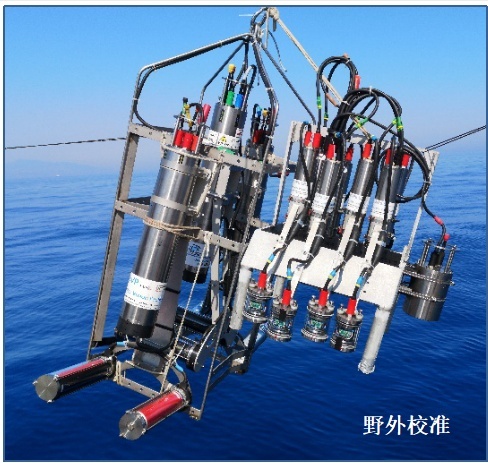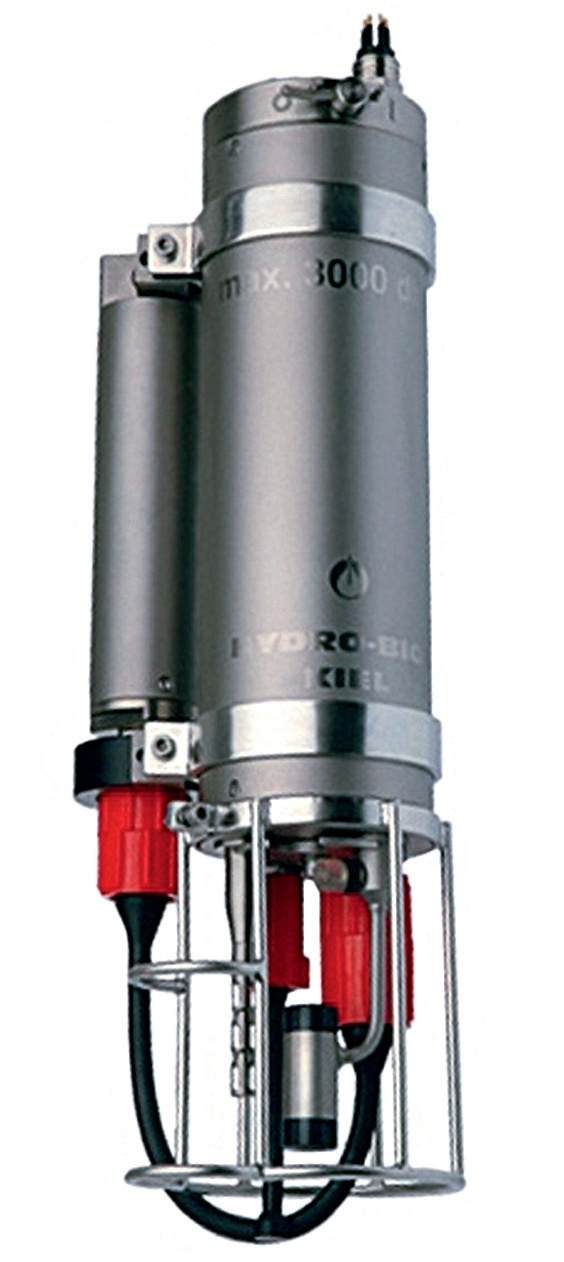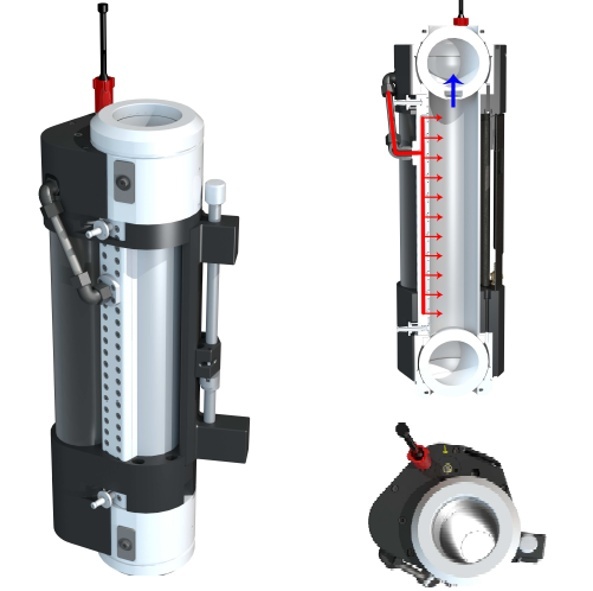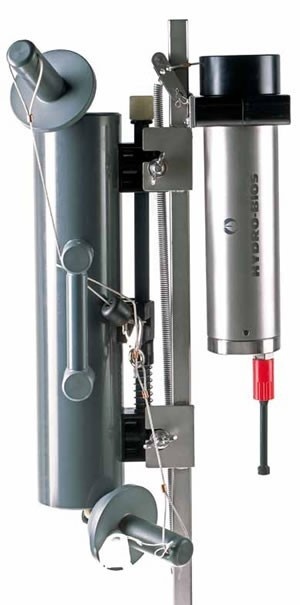看了德国HYDRO-BIOS公司-多通道沉积物捕获器444101的用户又看了
 留言询价
留言询价
虚拟号将在 180 秒后失效
使用微信扫码拨号
德国HYDRO-BIOS公司--多通道沉积物捕获器 Multi Sediment Trap
多通道沉积物捕获器的设计主要用于对相对垂直颗粒流较大的湖泊、大陆架和水栖环境的沉积物的自动采集。在北极、南极、热带、亚热带等环境中,经过无数次的长期野外操作,已经证明了它的可靠性。这款仪器不需要很重的固定线缆,它在较小的船上也可以很容易地安置和收回。多通道沉积物捕获器的控制装置可以执行为期一年多的时间依赖性工作。为了防止捕获到的沉积物从收集筒的上部被冲走,每个收集器在开口处都安装一个可拆卸的塑料网格,捕获器内部完全不含金属。当多通道沉积物捕获器的采集瓶不工作时,它们与周围环境是隔离的。在布放和回收操作期间,收集筒底部是开放的,允许水流自动流过收集筒腔体。
整体框架材质为钛合金,完全抗腐蚀;整个系统由3节长时间锂电池供电。根据不同的需求,不同多通道沉积物捕获器的收集瓶数量可以是6、12、24:
豪华型:
豪华型多通道沉积物捕获器通过PC机上的一个OceanLab软件进行预编程,允许用户实时(年、月、日、时、分)对每个收集瓶的采样间隔单独预先设定,从1分钟至8760小时。豪华型采样器可通过增加各种参数的不同传感器进行升级,数据存储器容量可达4M。
豪华型多通道沉积物捕获器规格:框架材质:钛合金
可安装收集瓶数量:6个,12个,24个
收集瓶体积:250ml采样间隔设定:通过带OceanLab软件的电脑编程开口面积:0.015平方米沉降筒长:560mm圆锥筒夹角:40度沉降筒直径与长度比例:1:4**操作深度:3000/6000/11000米
豪华型多通道沉积物捕获器订购指南:
类型 | 尺寸 | 高度 | 空气中重量 | 水中重量 | |
444 101 | 6瓶 | 直径320mm | 1200mm | 12kg | 5kg |
444 121 | 12瓶 | 直径520mm | 1040mm | 25kg | 10kg |
444 141 | 24瓶 | 800×800mm | 1000mm | 45kg | 20kg |
444 150备用收集瓶,容积250ml,24个/套 444 160备用锂电池,3节/套
马达单元数据处理软件
德国HYDRO-BIOS公司多通道沉积物捕获器国内应用案例
1、水产养殖领域研究:
回收MST12 回收MST12MST12捕获到的沉积物样品
MST12多通道沉积物捕获器和Multi Limnos自动水样采集器共同参与了山东某大型水产养殖企业海参养殖区水体和沉积物之间营养物质循环的研究,获得了极其珍贵的数据,为今后饵料的投放建立了非常科学的数学模型,大大降低了企业的养殖成本。
2、海湾沉积动力学研究:
MST24 MST24坐底式布放 MST24坐底式布放
德国HYDRO-BIOS公司MST24多通道沉积物捕获器参与了国家海洋局罗源湾沉积动力学科研项目。罗源湾位于福建省沿海东北部,闽江口以北约50公里,是全国少有的天然深水港湾,可全天候靠泊30万吨轮船。罗源湾具备建造东方大港的条件,从“十一五”期间开始,罗源湾成为福建省重点建设的港口。罗源湾在行政区划上隶属福州市,北岸属罗源县,南岸属连江县。根据海峡西岸经济区规划,列为福州港的深水外港。罗源湾在福建省、乃至中国港口的发展中有着非常重要的地位,对它的研究也势在必行。科研人员将MST24长期坐底式布放在罗源湾,成功捕获到了大量**代表性的自然沉积物,为罗源湾沉积动力学的研究提供了真实可靠的数据。
代表文献:
1.Jürgen Lenz, Alvaro Morales, Judith Gunkel,1993.Mesozooplankton standing stock during the North Atlantic spring bloom study in 1989 and its potential grazing pressure on phytoplankton: a comparison between low, medium and high latitudes.Deep Sea Research Part II: Topical Studies in Oceanography.40(1-2):559–572.
2.Dethleff, Dirk, Nürnberg, Dirk, Reimnitz, Erk, Saarso, Maart and Savchenko, Y.P.,1993.East Siberian Arctic Region Expedition '92: The Laptev Sea - its significance for Arctic sea-ice formation and transpolar sediment flux.Reports on Polar Research.120:3-48.
3.Bloesch Jürg,1996.Towards a new generation of sediment traps and a better measurement/understanding of settling particle flux in lakes and oceans: A hydrodynamical protocol.Aquatic Sciences.58(4):283-296.
4.A. Accornero, A. Bergamasco, A. Monaco, S. Tucci,1999.Particle Fluxes at the Edge of the Ross Ice Shelf: the Role of Physical Forcing.Oceanography of the Ross Sea Antarctica.177-195.
5.David N. Thomas, Hilary Kennedy, Gerhard Kattner, Dieter Gerdes, G. S. Dieckmann, Carl Gough,2002.Biogeochemistry of platelet ice: its influence on particle flux under fast ice in the Weddell Sea, Antarctica.Ecological Studies in the Antarctic Sea Ice Zone.169-179.
6.A. ACCORNERO, C. MANNO, K.R. ARRIGO, A. MARTINI and S. TUCCI,2003.The vertical flux of particulate matter in the polynya of Terra Nova Bay. Part I. Chemical constituents.Antarctic Science.15 (1): 119–132.
7.Alessandra Accornero, Marcia M. Gowing,2003.ANNUAL SEDIMENTATION PATTERN OF ZOOPLANKTON FECAL PELLETSIN THE SOUTHERN ROSS SEA: WHAT FOOD WEBS AND PROCESSESDOES THE RECORD IMPLY?.BIOGEOCHEMISTRY OF THE ROSS SEA ANTARCTIC RESEARCH SERIES.78:261-278.
8.P. Moreira-Turcq, J.M. Jouanneau, B. Turcq, P. Seylerd, O. Weber, J.L. Guyot,2004.Carbon sedimentation at Lago Grande de Curuai, a floodplain lake in the low Amazon region: insights into sedimentation rates.Palaeogeography, Palaeoclimatology, Palaeoecology.214(1–2):27–40.
9.V. Ramaswamy, M.M. Sarin, R. Rengarajan,2005.Enhanced export of carbon by salps during the northeast monsoon period in the northern Arabian Sea.Deep Sea Research Part II: Topical Studies in Oceanography.52(14-15):1922–1929.
10.J. C. Colombo, N. Cappelletti, J. Lasci, M. C. Migoya, E. Speranza, and C. N. Skorupka,2006.Sources, Vertical Fluxes, and Equivalent Toxicity of Aromatic Hydrocarbons in Coastal Sediments of the Río de la Plata Estuary, Argentina.Environmental Science & Technology.40(3), 734–740.
11.L. Roselli, C. Manno & G. Spezie ,2007.Inertial oscillations and particle flux interactions in a marine protected area in Gulf of Naples.Chemistry and Ecology.23(2):177-190.
12.C. Manno , S. Sandrini, L. Tositti, A. Accornero ,2007.First stages of degradation of Limacina helicina shells observed above the aragonite chemical lysocline in Terra Nova Bay (Antarctica).Journal of Marine Systems.68(1-2):91–102.
13.Jan Michels, Gerhard S. Dieckmann, David N. Thomas, Sigrid B. Schnack-Schiel, Andreas Krell, Philipp Assmy, Hilary Kennedy, Stathis Papadimitriou, Boris Cisewski,2008.Short-term biogenic particle flux under late spring sea ice in the western Weddell Sea.Deep Sea Research Part II: Topical Studies in Oceanography.55(8-9):1024–1039.
14.C. Manno1, V. Tirelli, A. Accornero and S. Fonda Umani,2009.Importance of the contribution of Limacina helicina faecal pellets to the carbon pump in Terra Nova Bay (Antarctica).Journal of Plankton Research.32(2):145-152.
15.Andreas Kleeberg, Christiane Herzog, Michael Hupfer,2013.Redox sensitivity of iron in phosphorus binding does not impede lake restoration.Water Research.47(3):1491–1502.
暂无数据!
 德国HYDRO-BIOS公司-多通道沉积物捕获器444101的工作原理介绍?
德国HYDRO-BIOS公司-多通道沉积物捕获器444101的工作原理介绍? 德国HYDRO-BIOS公司-多通道沉积物捕获器444101的使用方法?
德国HYDRO-BIOS公司-多通道沉积物捕获器444101的使用方法? 德国HYDRO-BIOS公司-多通道沉积物捕获器444101多少钱一台?
德国HYDRO-BIOS公司-多通道沉积物捕获器444101多少钱一台? 德国HYDRO-BIOS公司-多通道沉积物捕获器444101使用的注意事项
德国HYDRO-BIOS公司-多通道沉积物捕获器444101使用的注意事项 德国HYDRO-BIOS公司-多通道沉积物捕获器444101的说明书有吗?
德国HYDRO-BIOS公司-多通道沉积物捕获器444101的说明书有吗? 德国HYDRO-BIOS公司-多通道沉积物捕获器444101的操作规程有吗?
德国HYDRO-BIOS公司-多通道沉积物捕获器444101的操作规程有吗? 德国HYDRO-BIOS公司-多通道沉积物捕获器444101的报价含票含运费吗?
德国HYDRO-BIOS公司-多通道沉积物捕获器444101的报价含票含运费吗? 德国HYDRO-BIOS公司-多通道沉积物捕获器444101有现货吗?
德国HYDRO-BIOS公司-多通道沉积物捕获器444101有现货吗? 德国HYDRO-BIOS公司-多通道沉积物捕获器444101包安装吗?
德国HYDRO-BIOS公司-多通道沉积物捕获器444101包安装吗?



